Safe In-Wall AC to DC Transformers??
-
@petewill I think this is a wise decision.
I liked the discussion on this thread, so I have to thank you too.Now it is waiting time. Waiting until the hlk-s arrive at the lab of the test guy.
My Chinese friend said, the package is on its way. -
Just a heads up. Yesterday I blew up this module, which I bought some time ago (before we invest into the HLK analysis).
I really don't know what happened, it simply exploded without any further notice (and very near my face, like 30cm or so). I was calibrating the power sensor. Dummy I was, trying to find why it was measuring 10W while the PSU is rated 3W...
The sensor is based on a current transformer TA12-100 , measuring itself on ACMains.
Perhaps some old-school guy can tell me if I violated some some basic rule? I want to believe that some scrap wire or metal has shortened some track, but how to prove it?
Well after that, I measured the arduino + radio + measurement circuit and it never crossed 30mA... I also replaced the damaged PSU (by one identical), and now the power sensor measures 4W (instead the previous 10W), and despite some noising capacitor, no heat or instability after 12 hours or so on.
Pictures of the occurrence:
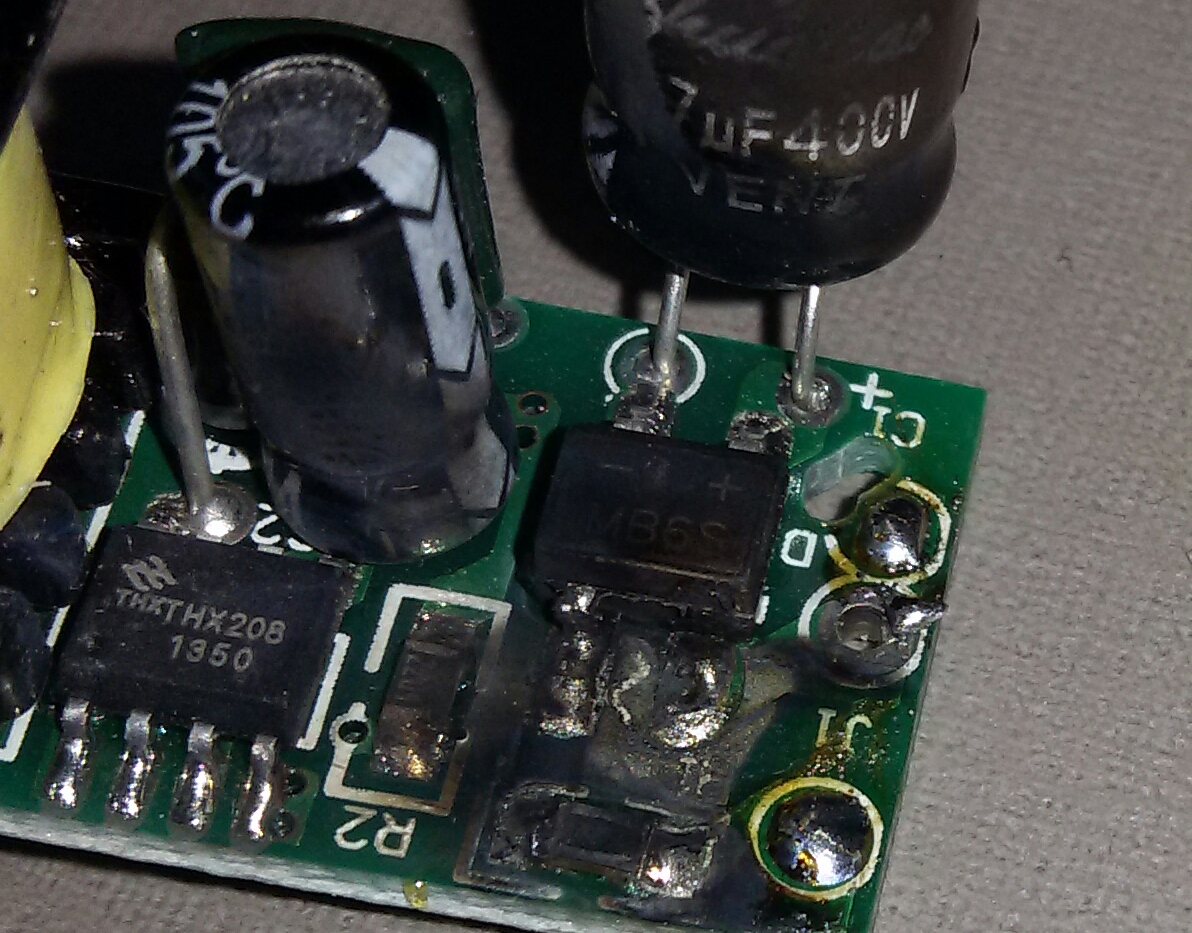
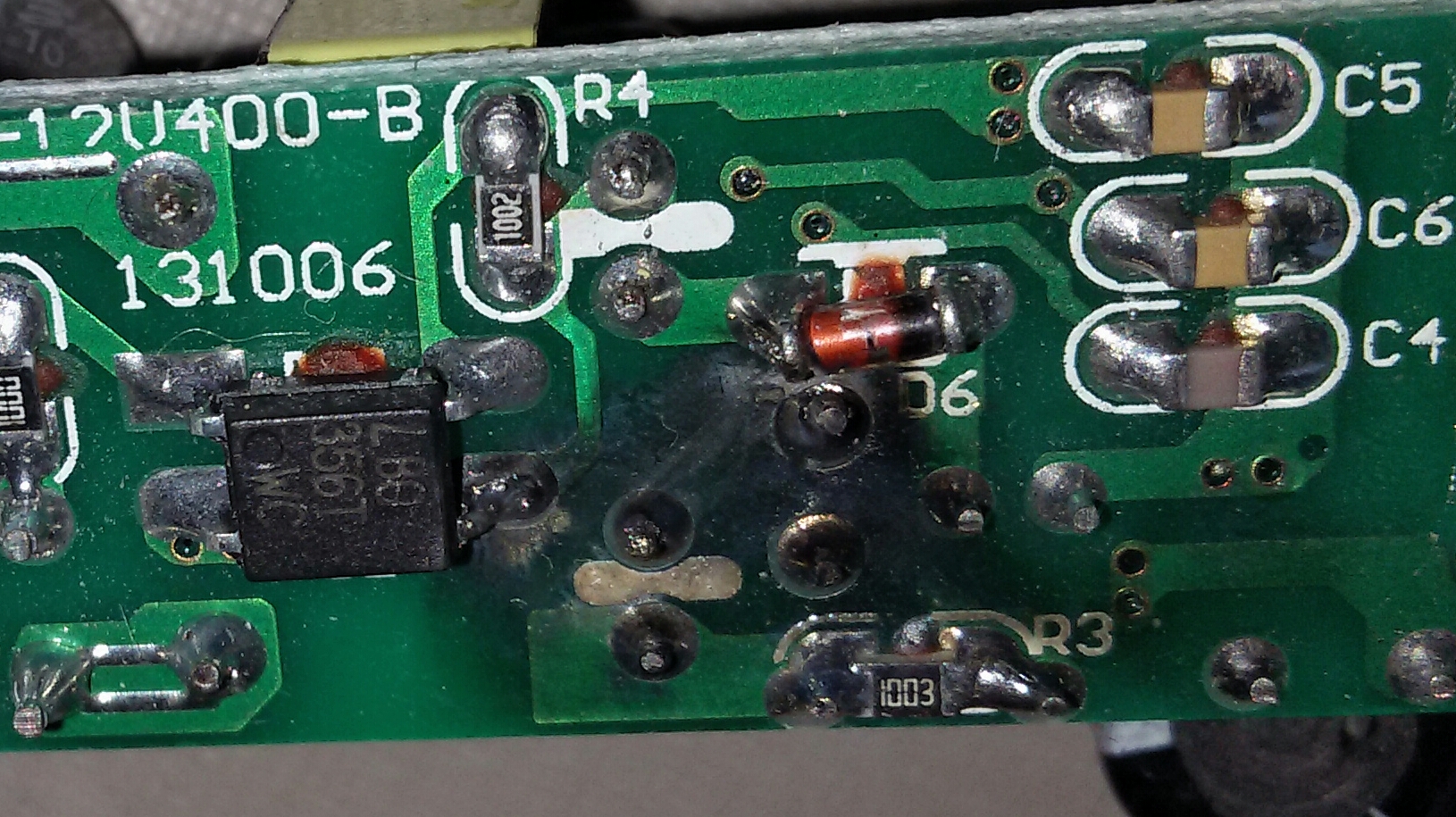
Botton one is the damaged one:
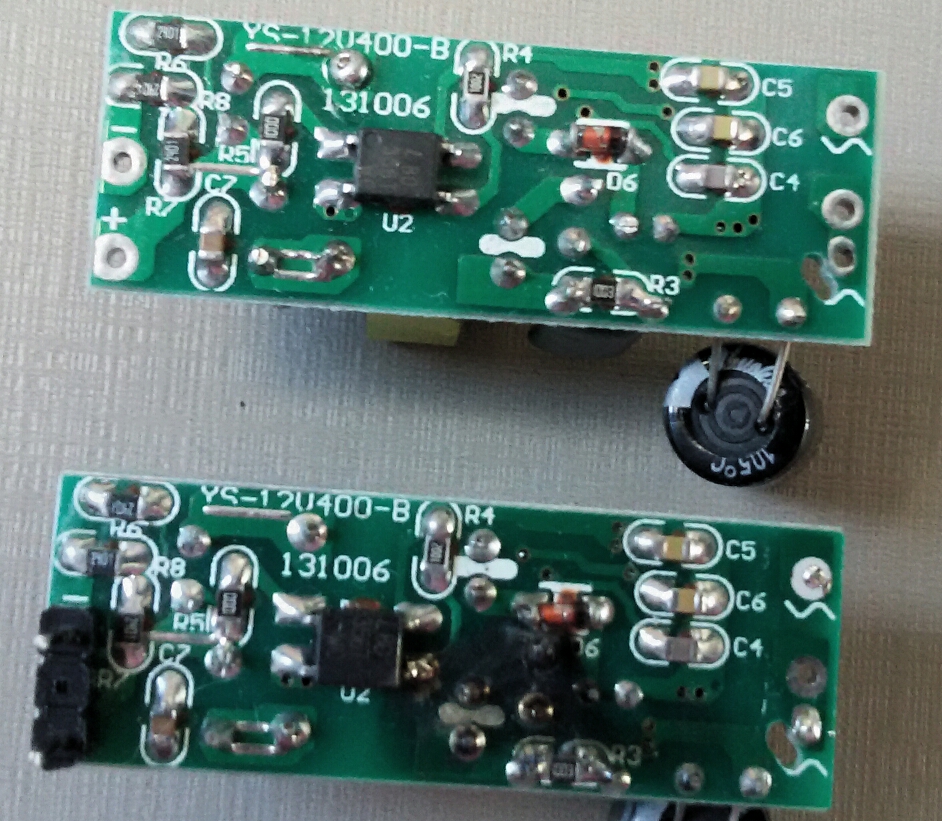
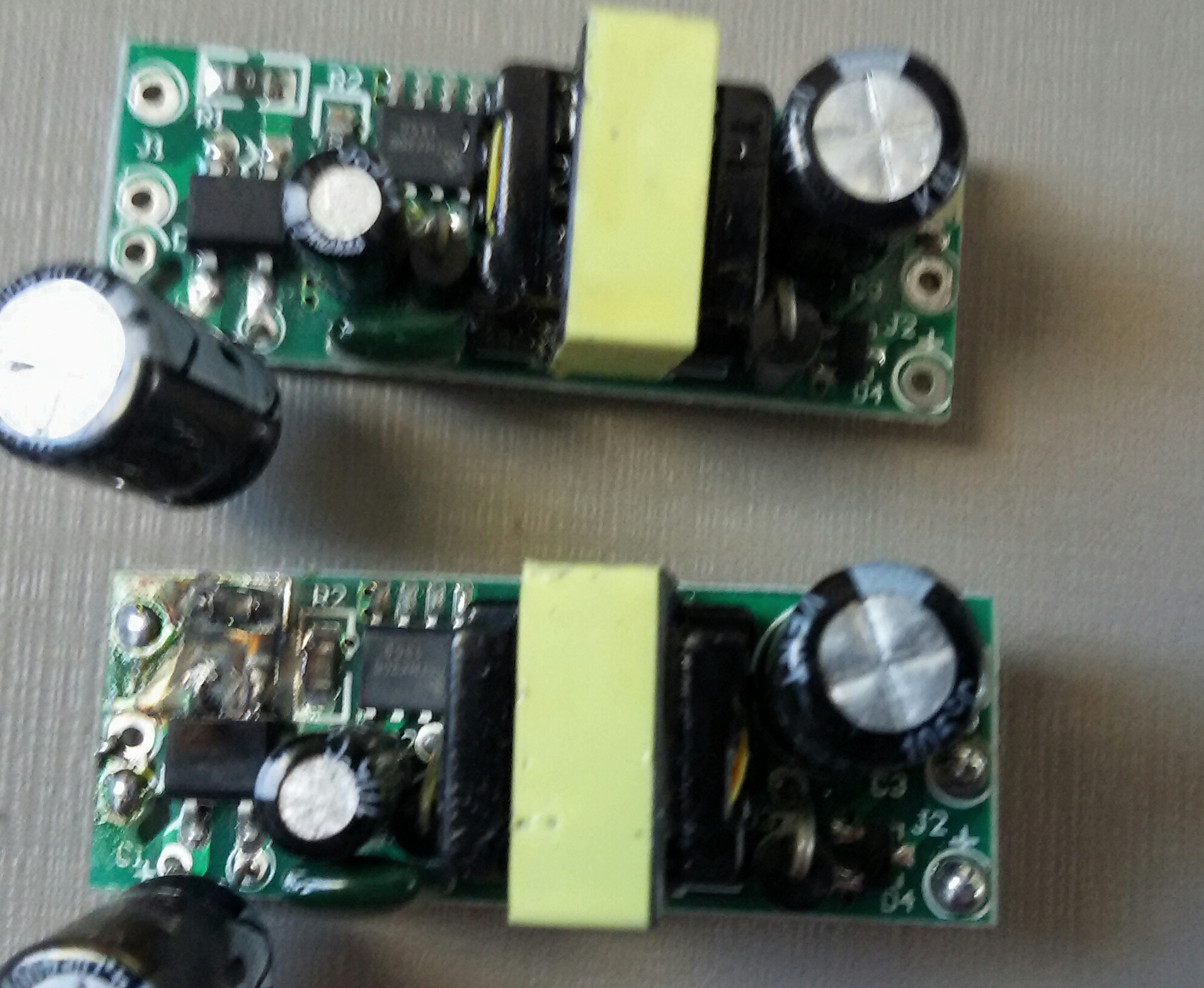
-
Just a heads up. Yesterday I blew up this module, which I bought some time ago (before we invest into the HLK analysis).
I really don't know what happened, it simply exploded without any further notice (and very near my face, like 30cm or so). I was calibrating the power sensor. Dummy I was, trying to find why it was measuring 10W while the PSU is rated 3W...
The sensor is based on a current transformer TA12-100 , measuring itself on ACMains.
Perhaps some old-school guy can tell me if I violated some some basic rule? I want to believe that some scrap wire or metal has shortened some track, but how to prove it?
Well after that, I measured the arduino + radio + measurement circuit and it never crossed 30mA... I also replaced the damaged PSU (by one identical), and now the power sensor measures 4W (instead the previous 10W), and despite some noising capacitor, no heat or instability after 12 hours or so on.
Pictures of the occurrence:


Botton one is the damaged one:


@rvendrame Whatever happened (looks like something went to ground; were you probing with a scope?), that MB6S was the source, because that rectifier is blow out.
I don't think you will be able to buff that one out... :stuck_out_tongue:
-
@ServiceXp , no
-
@rvendrame Whatever happened (looks like something went to ground; were you probing with a scope?), that MB6S was the source, because that rectifier is blow out.
I don't think you will be able to buff that one out... :stuck_out_tongue:
@ServiceXp , no oscilloscope. I was Cheking why the power sensor was measuring 10w instead 3w or less.
The CT sensor was around the mains phase wire, and the psu was powering the sensor. I didn't change anything , just multimeter readings on DC side. Didn't touch the ac mains except to insert the current transformer around it.
I also connected a light bulb on same wire, in order to generate some load. The sensor was measuring the bulb correctly, however when the bulb was disconnected it read 10w, away too much for only an arduino.
-
@ServiceXp , no oscilloscope. I was Cheking why the power sensor was measuring 10w instead 3w or less.
The CT sensor was around the mains phase wire, and the psu was powering the sensor. I didn't change anything , just multimeter readings on DC side. Didn't touch the ac mains except to insert the current transformer around it.
I also connected a light bulb on same wire, in order to generate some load. The sensor was measuring the bulb correctly, however when the bulb was disconnected it read 10w, away too much for only an arduino.
@rvendrame I'm not sure if I really get your setup, but ground loops can be a very nifty cause of all kinds of stuff getting 'too hot' :grimacing:
Could this be the cause of the problem?
That 0 ohms resistor also looks like it been fried. What's its use on the board?
-
@ServiceXp , no oscilloscope. I was Cheking why the power sensor was measuring 10w instead 3w or less.
The CT sensor was around the mains phase wire, and the psu was powering the sensor. I didn't change anything , just multimeter readings on DC side. Didn't touch the ac mains except to insert the current transformer around it.
I also connected a light bulb on same wire, in order to generate some load. The sensor was measuring the bulb correctly, however when the bulb was disconnected it read 10w, away too much for only an arduino.
@rvendrame Hard to say then, but I'd bet an ice cream sandwich that something went to ground/neutral. It's the high voltage side that is blown out of that rectifier.. You may never know what the cause was.
-
Does anyone know of any 120V AC to 5V DC transformers that are safe to put in a wall electrical box? I have been using old cell phone chargers for most of my projects but I was recently pondering putting something right in the wall. Since shipping can take so long I thought I'd ask now before I even start on the project.
I did some searching and couldn't find anything so I thought I'd ask the experts here.
Thanks in advance!
EDIT 9/7/2016
Watch out for Fakes! Read more here: https://forum.mysensors.org/topic/1607/safe-in-wall-ac-to-dc-transformers/355
If in doubt you can get them directly from the vendor here: http://www.hlktech.net/product.php?CateId=10EDIT 12/28/2015
After MUCH discussion on this here are the findings of this thread (as of now):Here is the diagram for how things should be wired:
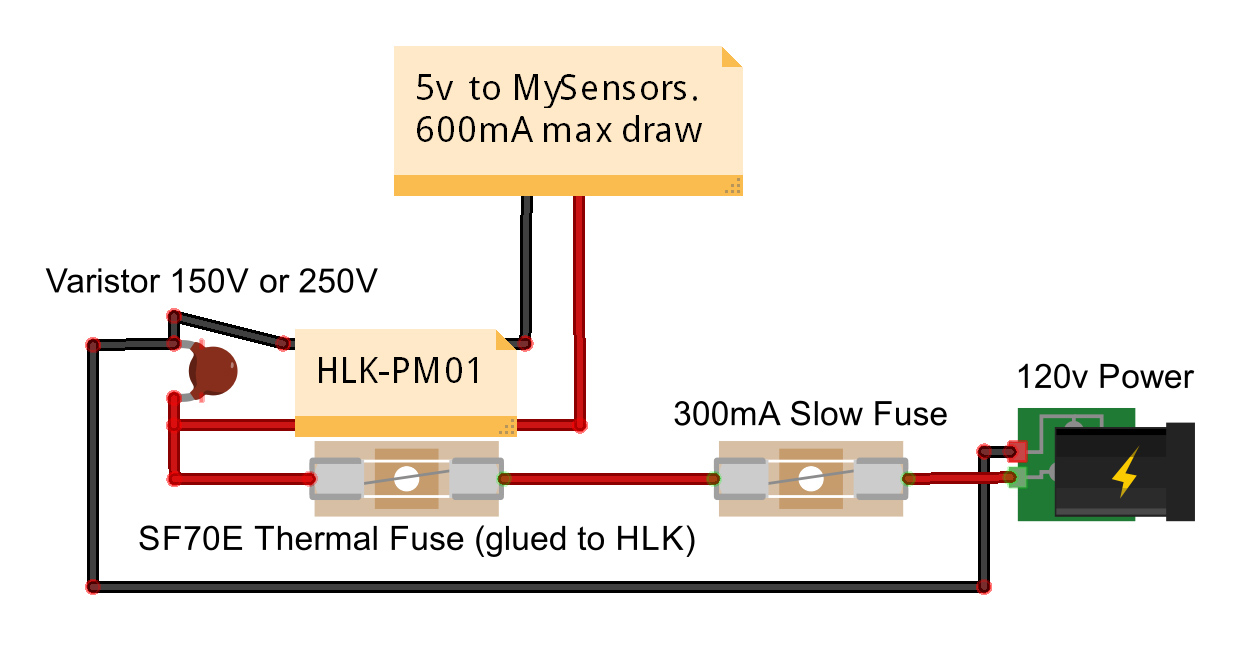
These are the parts I ordered. I haven't tested any of these parts yet as this project has been put on the back burner for now :(. I am in the USA so this is spec'd for 120 VAC. If you're using 240 you will need to change the size of the Varistor but everything else should be fine for 240.
Also, see these posts for more discussion/ideas if interested:
http://forum.mysensors.org/topic/1540/110v-230v-ac-to-mysensors-pcb-board
http://forum.mysensors.org/topic/2488/in-wall-pcbVaristor for 120VAC - http://www.ebay.com/itm/321024816822?_trksid=p2057872.m2749.l2649&ssPageName=STRK%3AMEBIDX%3AIT
73°C Thermal Fuse - http://www.ebay.com/itm/221560426284?_trksid=p2057872.m2749.l2649&var=520415979885&ssPageName=STRK%3AMEBIDX%3AIT
250V 300mA Slow Blow Fuse - http://www.ebay.com/itm/111433875797?_trksid=p2057872.m2749.l2649&var=410420838583&ssPageName=STRK%3AMEBIDX%3AIT
HLK-PM01 - http://www.ebay.com/itm/351418782712?_trksid=p2057872.m2749.l2649&ssPageName=STRK%3AMEBIDX%3AIT
Pete
-
@petewill when you start home automation at that time please share photos wit me.
how to setup the no. of relay, power supply, arduino, radio etc in WALL box. -
@Didi, did you end up doing horrible things to these? You said something about flashbox?
-
If the fellow behind http://lygte-info.dk/info/usbPowerSupplyTestHow UK.html posts good results on his website, the supply chain should prepare for a flood of orders! I've seen those tests widely referenced, and I think a lot of people are looking for something safer but still cheap.
Don't be surprised if a positive review made it to HackaDay and the like as well.
(Get your ali orders in now, beat the rush - if you think it will come out well)
-
I'm also looking forward about test results. I've seen the module however never totally trusted; until I found this topic. The price and size are perfect for under-socket installation. If further results come out good, I'm eager to see in-wall projects.
-
This one is not "safe", but it is an In-Wall AC to DC converter. Transformerless. With a 3A Solid state relay:
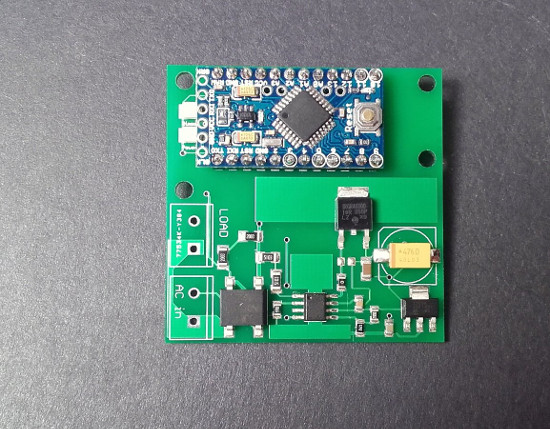
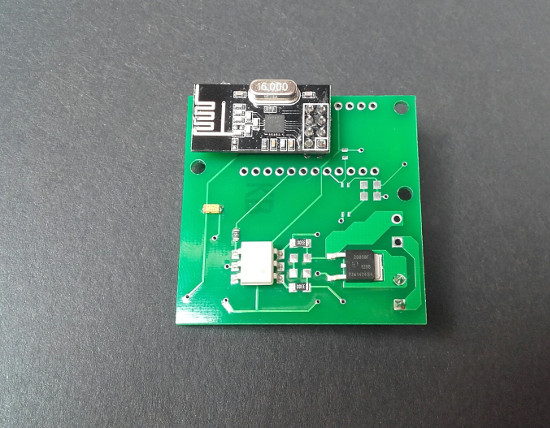
The converter output is 3.3V at 100mA and the solid state relay is a Triac.
-
Looks very nice, but you cannot use it for sensors or actuators that can be touched by hand and do not comply with the insulation standards, since parts of it will be connected to mains.
-
Did anyone look at the SwitchMote PSU over at LowerPowerLab? More info here. The kit is fairly expensive ($30) but I wonder how much it would be to source the components yourself since someone else has done all the design work.
-
Did anyone look at the SwitchMote PSU over at LowerPowerLab? More info here. The kit is fairly expensive ($30) but I wonder how much it would be to source the components yourself since someone else has done all the design work.
@TD22057 I would say the cost of this PSU is dominated by the Recom converter onboard. Farnell charges E14,58 for single pieces (http://nl.farnell.com/recom-power/rac02-05sc/ac-dc-converter-2w-5v-reg/dp/1903060?searchRef=SearchLookAhead).
Rest of the components will be a few Euro's, and ofcourse the PCB (which contains a number of milled slots for isolation).
All together you will get fairly close to $30 when building it yourself. -
@Bertb Yes, it shouldn't be touched. It can be used with wall-mounted mains switches, though. Placed behind it.
